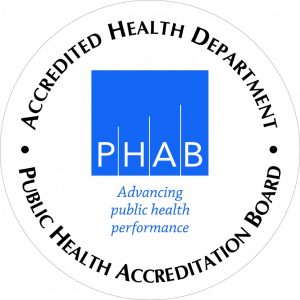COVID-19 (coronavirus) is a highly infectious respiratory illness caused by a novel (new) coronavirus that spreads from person to person. The virus is thought to spread mainly between people who are in close contact with one another (within about 6 feet) through respiratory droplets produced when an infected person coughs or sneezes.
To Provide Safe Drive-In Religious Services, Public Health Urges the Following:
- Ensure members remain in their own cars during drive-in services.
- Determine the number of participants/cars based on the location or parking lot size. There should be at least 6
feet between all cars. - Broadcast the service via car radio so members can stay in their cars with the windows up.
- Limit the number of attendees by promoting drive-in services only to current members.
- Encourage sick members to stay home.
- Do not allow cars to idle during the service. (Participants should bring a generator or portable radio if they are
concerned about battery life.) - Serve and distribute communion with caution. If you choose to provide communion, it should be served or
distributed pre-packaged in an effort to limit handling. The communion package should be distributed by
someone wearing gloves and covering their mouth and nose with a mask, scarf or bandana. Limit people
gathering together in close proximity (less than 6 feet) to pick up communion and/or receive communion. - Provide a livestream or other online worship option for members who are unable to attend.
- Leaders can use Facebook Live and followers can watch services and join in with their own comments
and prayers. - If capacity allows, host a conference call with members.
- Videos can be shared on YouTube Live or posted to a YouTube channel with a link for text communications.
- Host an online worship service through Zoom. (Reduced pricing is often available for registered non-profit
organizations.) - If technology is a barrier, leaders can post a transcript of the service on their website or Facebook page, or e-mail the transcript to their community
- Leaders can use Facebook Live and followers can watch services and join in with their own comments
Drive-in Religious Services FAQ
How can members attend our drive-in services?
All members should stay in their cars with the windows up.
Why is it important for our members to remain in their own cars?
COVID-19 is highly contagious and spreads from person to person. The virus is thought to spread mainly between
people who are in close contact with one another (within about 6 feet) through respiratory droplets produced when
an infected person coughs or sneezes. Gatherings of people pose a greater risk of COVID-19 transmission
because they increase person-to-person contact and because many people can still transmit COVID-19 even if
they don’t have symptoms or feel sick.
Where should we have our services?
Services should be held at an outside venue, such as a parking lot. The outdoor site should accommodate
attendees while they remain in their cars. The size of the venue will determine the number of participants to ensure
there is at least 6 feet of space between all cars.
Who should we invite to our services?
The number attending services should be limited to only members of the house of worship.
How can we deliver our service?
The service can be broadcast via car radio, allowing members to remain in their cars with the windows up.
Livestream or other online worship options can be considered for those who are unable to attend.
Can cars be running during the service?
We do not recommend allowing cars to idle during the service due to increased emissions. If battery life is a
concern, ask members to bring a portable radio.
What if a member is sick?
Anyone who is sick should stay home and not attend services, but watch remotely.
Can communion be provided or served?
During the COVID-19 pandemic, houses of worship and religious organizations should serve or distribute
communion with caution. If you choose to provide communion, it should be served or distributed pre-packaged in
an effort to limit handling. The communion package should be distributed by someone wearing gloves and covering
their mouth and nose with a mask, scarf or bandana. Every effort should be made to limit people gathering together
in close proximity (less than 6 feet) to pick up communion and/or receive communion.
What if we have members who are not comfortable attending drive-in services?
Members who are uncomfortable attending drive-in services or who must stay home due to illness, can take
advantage of other online worship options like livestreaming.

